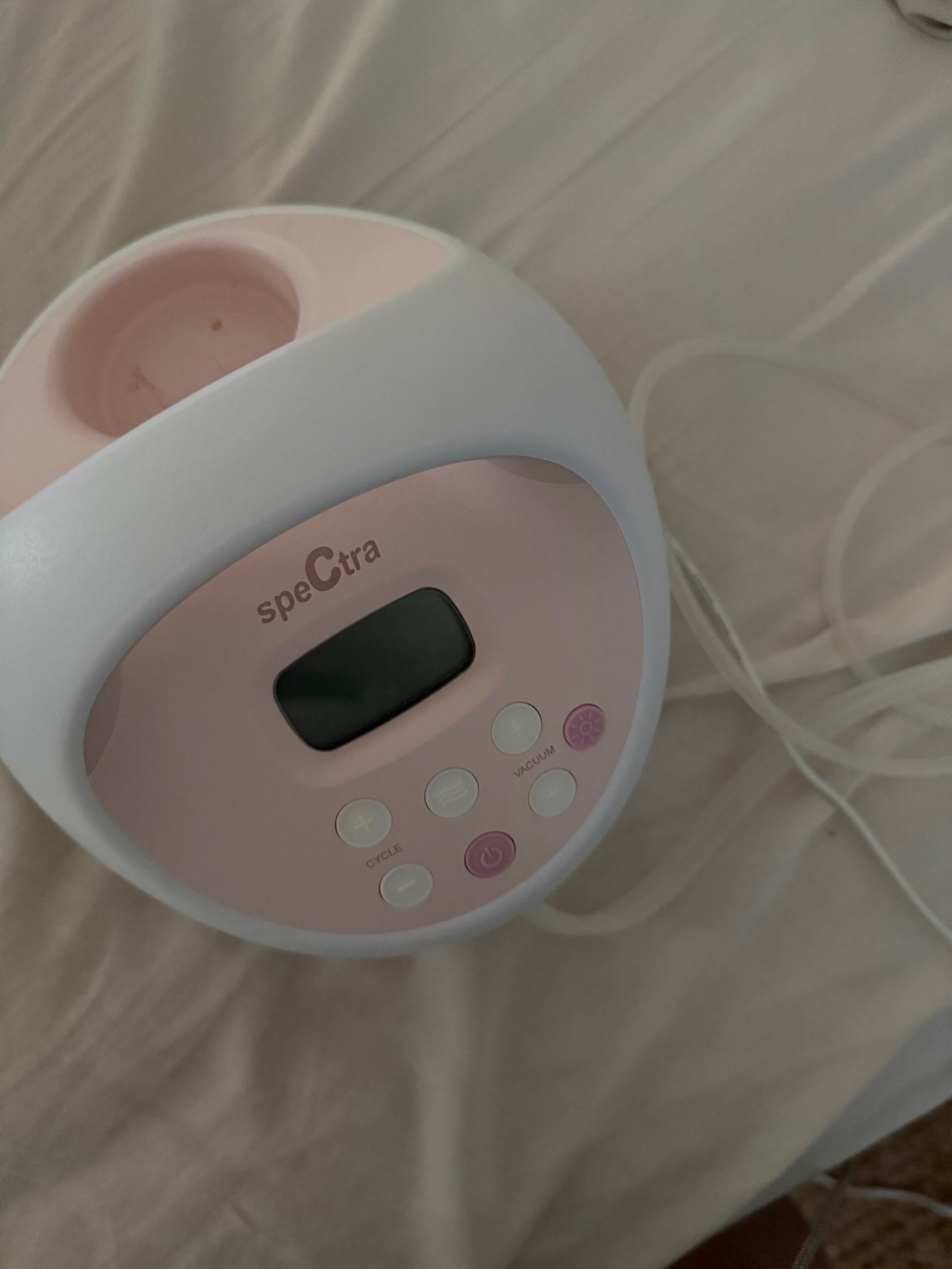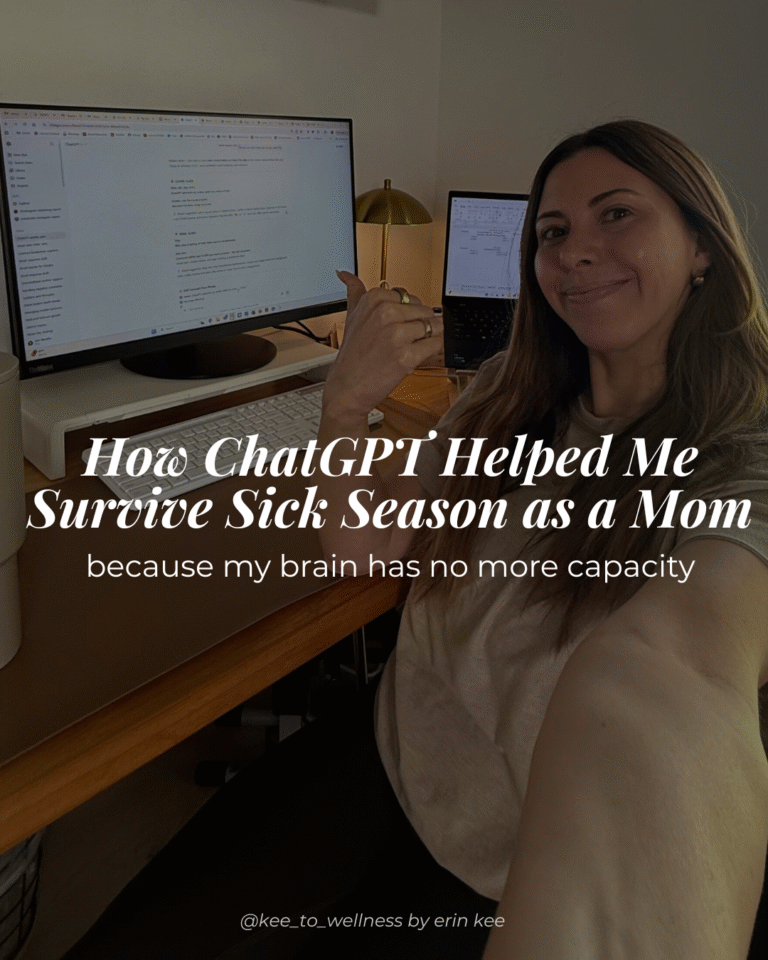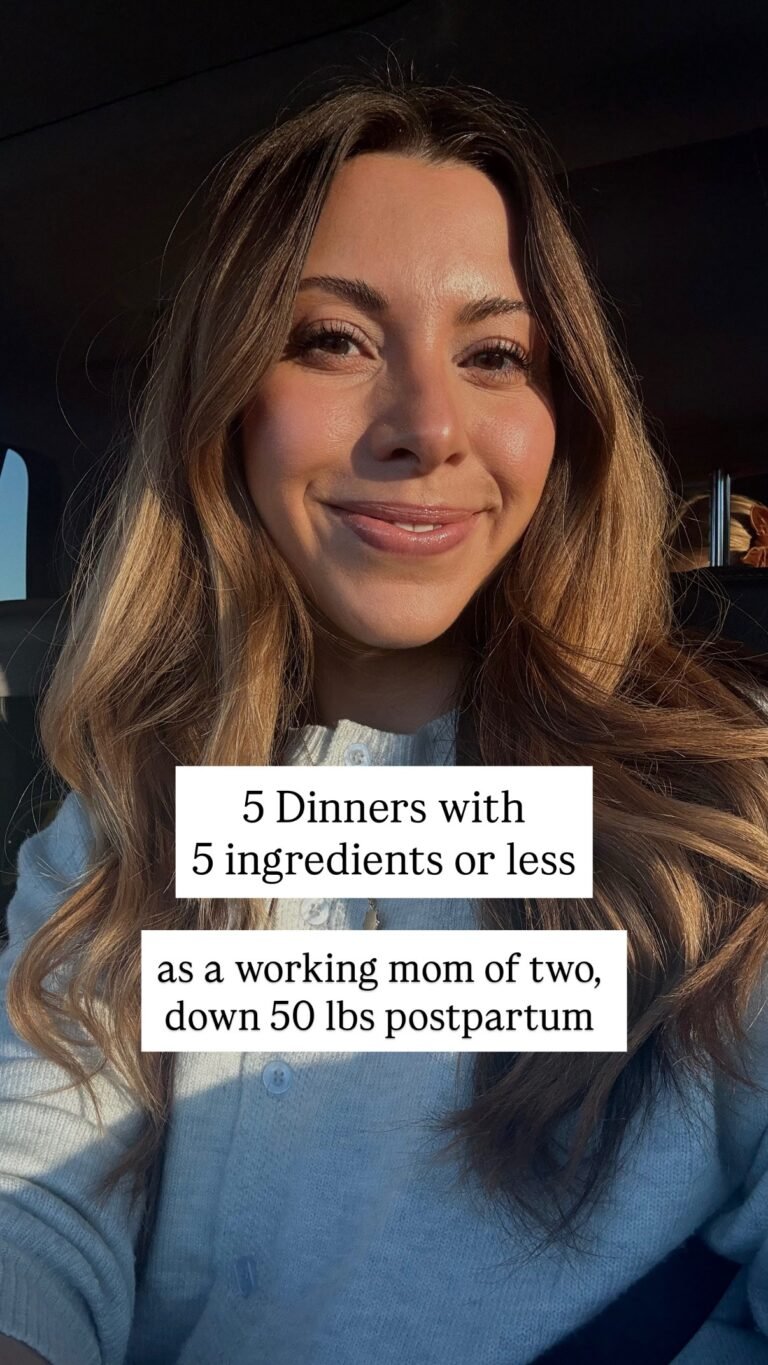Exclusively pumping (EP) isn’t for everyone, but it’s a method I’ve come to love, especially with my second baby. It gives me the freedom to share feeding duties, a structured schedule, and the peace of mind of knowing how much milk my baby is getting. If you’re considering exclusively pumping, here are some tips and tricks I’ve picked up to make the journey easier and more efficient.
Shop all products I used here.
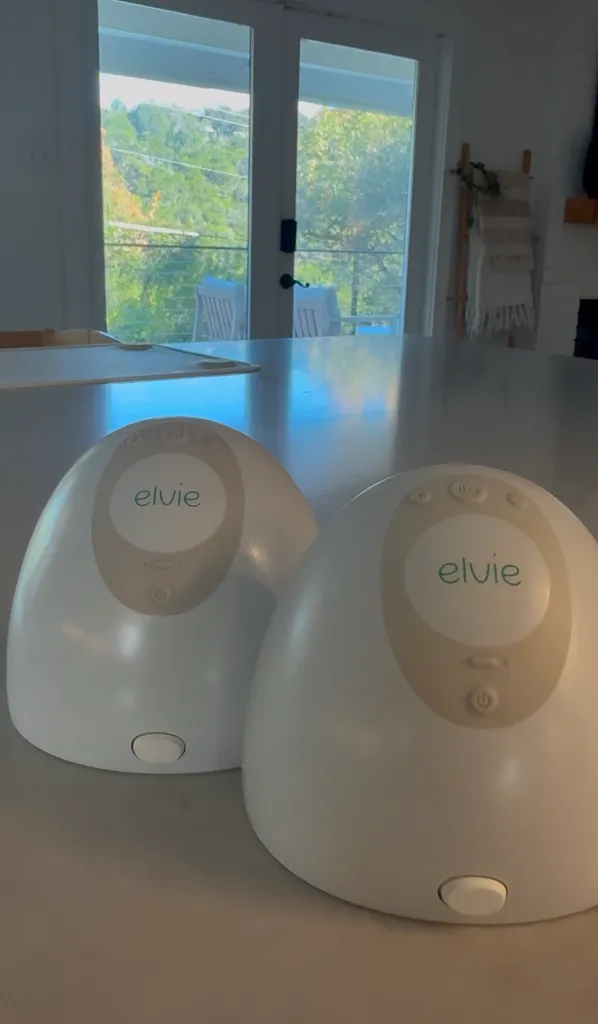
1. Start with a Stronger Pump
When beginning EP, a stronger pump like the Spectra can be a game-changer for building supply. Here are some reasons why starting strong matters:
- Boost Supply: A hospital-grade pump, like the Spectra, provides powerful suction and helps establish and maintain milk production, especially in the early days.
- Hands-Free Pumping Bra: I recommend a comfortable, supportive pumping bra, such as Kindred Bravely, so you can keep your hands free while pumping.
- Power Pumping to Increase Supply: Power pumping (pumping for 10 minutes on, 10 minutes off for an hour) mimics cluster feeding, signaling your body to produce more milk. This can be helpful if you need to increase your supply or get it up quickly.
Once my supply was well-established, I transitioned to a wearable pump like the Elvie. It provided more freedom to move around, which is essential when juggling other responsibilities or kids. For my first baby, this routine helped me pump for 7 months, and having extra pump parts on hand kept everything seamless.
2. Set Your Pumping Schedule
Creating a consistent schedule is key to managing exclusively pumping effectively:
- Current Routine: Right now, I pump three times a day—once in the morning, midday, and before bed, for about 30 minutes each session. It keeps my supply steady while allowing for flexibility.
- Learning from Experience: With my first, I was pumping seven times a day, which was exhausting. Pumping three times a day is more manageable and frees up time for other tasks.
Finding a schedule that works for you helps you avoid burnout and still ensures your baby gets the milk they need.

3. Get Baby Used to Bottles Early
Introducing bottles from the start has been one of the best decisions. Here’s why:
- Bottle-Friendly Routine: Getting my baby comfortable with bottles right away made EP easier and allowed other caregivers to help with feeding. This is especially handy when you need a break or are busy with other tasks.
- Cold Bottles: We’ve also introduced cold bottles early on with our second baby, Liam, so we don’t have to heat bottles every time. This small change saves a lot of time and effort, especially on busy days!
4. Enjoy the Flexibility
One of the major perks of EP is the flexibility it provides. Pumping means I can build a stash of milk, and anyone can help feed the baby:
- Save Time: My current routine of pumping three times a day for 30 minutes each equals 1.5 hours daily. In comparison, cluster feeding every hour for 30-45 minutes would take much more time and leave little flexibility.
- Share the Load: Since I’m bottle-feeding, other family members can pitch in with feeding, which reduces stress and allows me to enjoy some downtime.
5. Use the Pitcher Method
The pitcher method is a huge time-saver when it comes to preparing bottles:
- Simple Storage: Collect all pumped milk throughout the day in a large pitcher or container in the fridge. This makes it easy to measure and prepare bottles quickly.
- Easy Pouring: When it’s time for a feed, you can just pour milk directly from the pitcher into the bottle, making feed prep quick and hassle-free.
When using the pitcher method, it’s important to let freshly pumped breast milk chill in the pump containers first before adding it to cold milk in the pitcher. This ensures all the milk remains at a safe temperature and prevents bacterial growth.
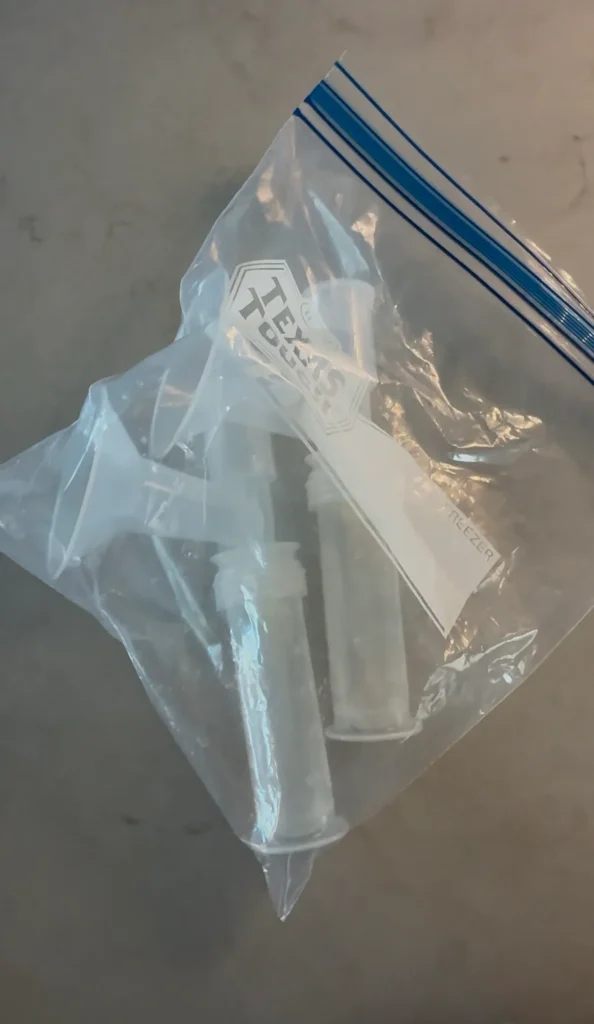
6. Fridge Hack for Pump Parts
Cleaning pump parts after every session can feel like a never-ending task, but here’s a simple trick:
- Fridge Storage: After each pump session, store your pump parts in a freezer bag or container in the fridge instead of washing them every time. Then, at the end of the day, sterilize them all at once.
- Save Time and Energy: This tip saves both time and energy, and it’s a lifesaver, especially if you’re pumping multiple times a day.
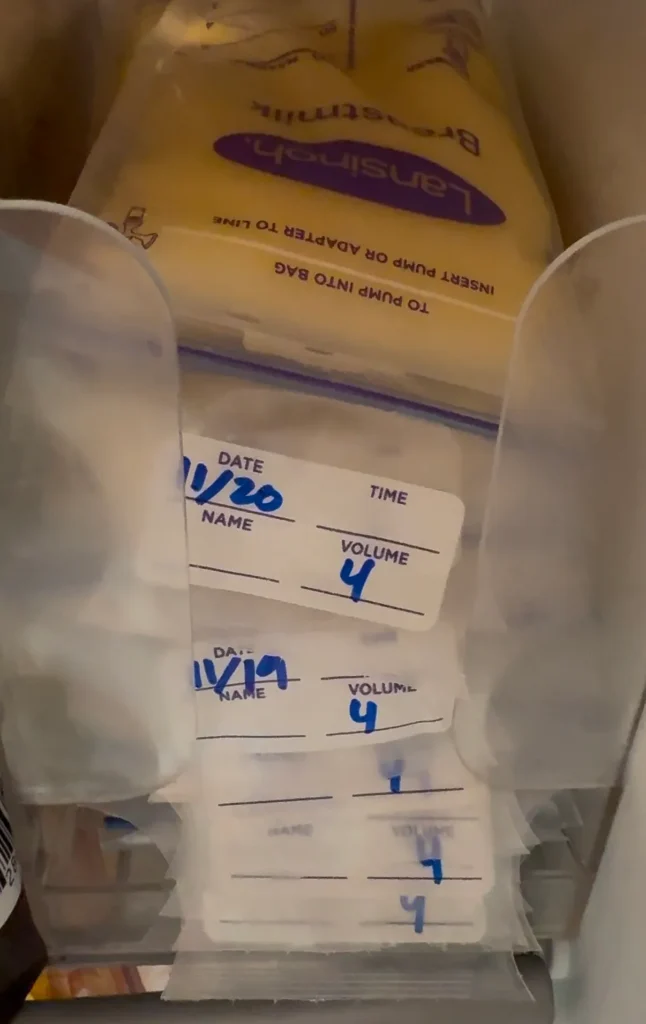
7. Efficient Freezer Storage & Inventory Management
Staying organized with your milk stash makes EP smoother:
- Freezer Organizer Tip: Use a freezer storage container where you add the newest milk bags on top and pull the oldest from the bottom. This rotation ensures none of your milk goes to waste.
- Track Inventory: I use the Milk Stash App to keep track of dates and amounts, making it easy to monitor what’s stored and plan feeds efficiently.

8. Wearable Collection Cups for Nighttime Pumping
Wearable collection cups have been a game-changer for nighttime sessions:
- My Routine: I wear collection cups overnight with a quality bra like the Kindred Bravely Sublime—just last night, I collected an extra 3 oz!
Boon Trove vs. Elvie Catch Review:
- Pros: Better suction, making it ideal for nighttime use.
- Cons: Bulkier design.
- Pros: Slimmer, more discreet for daytime wear; easy to clean with removable parts.
- Cons: Less suction compared to Boon, so better suited for daytime use.
For more details and discount codes on these products, check my EP Highlight on Instagram!
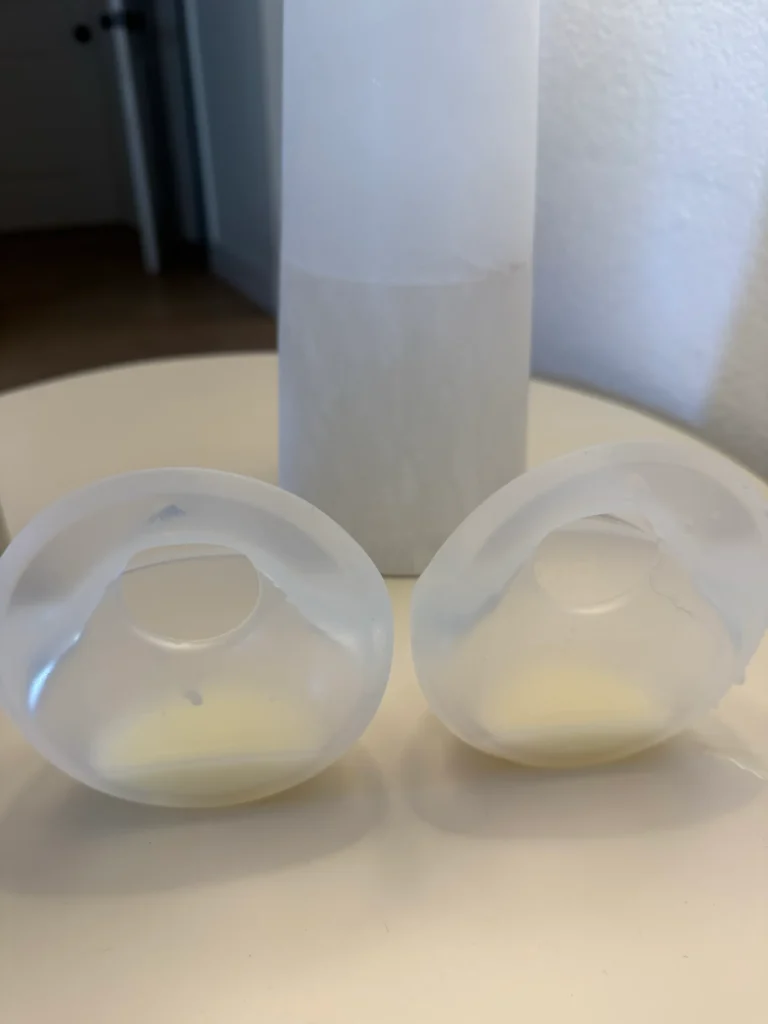
Optional: Consider Formula at Night
One additional tip is to consider using formula for nighttime feeds if it works for you. We use the baby brezza formula pro and it’s so fast & life changing! Use code KEE15OFF for 15% off.
- Longer Sleep Stretches: Formula can take a bit longer to digest, so babies might sleep for longer stretches after a formula feed.
- Easier Night Routine: It’s faster to prep formula than to pump in the middle of the night, making nighttime feeds more manageable and giving everyone a bit more rest.
Final Thoughts
Exclusively pumping can be a rewarding experience and an excellent option for parents who want flexibility. With the right setup, schedule, and a few time-saving tricks, it’s possible to maintain your supply, save time, and allow others to help with feedings. Although EP isn’t for everyone, I’ve found it to be a valuable routine that allows me to stay connected and well-supported during the newborn stage.
